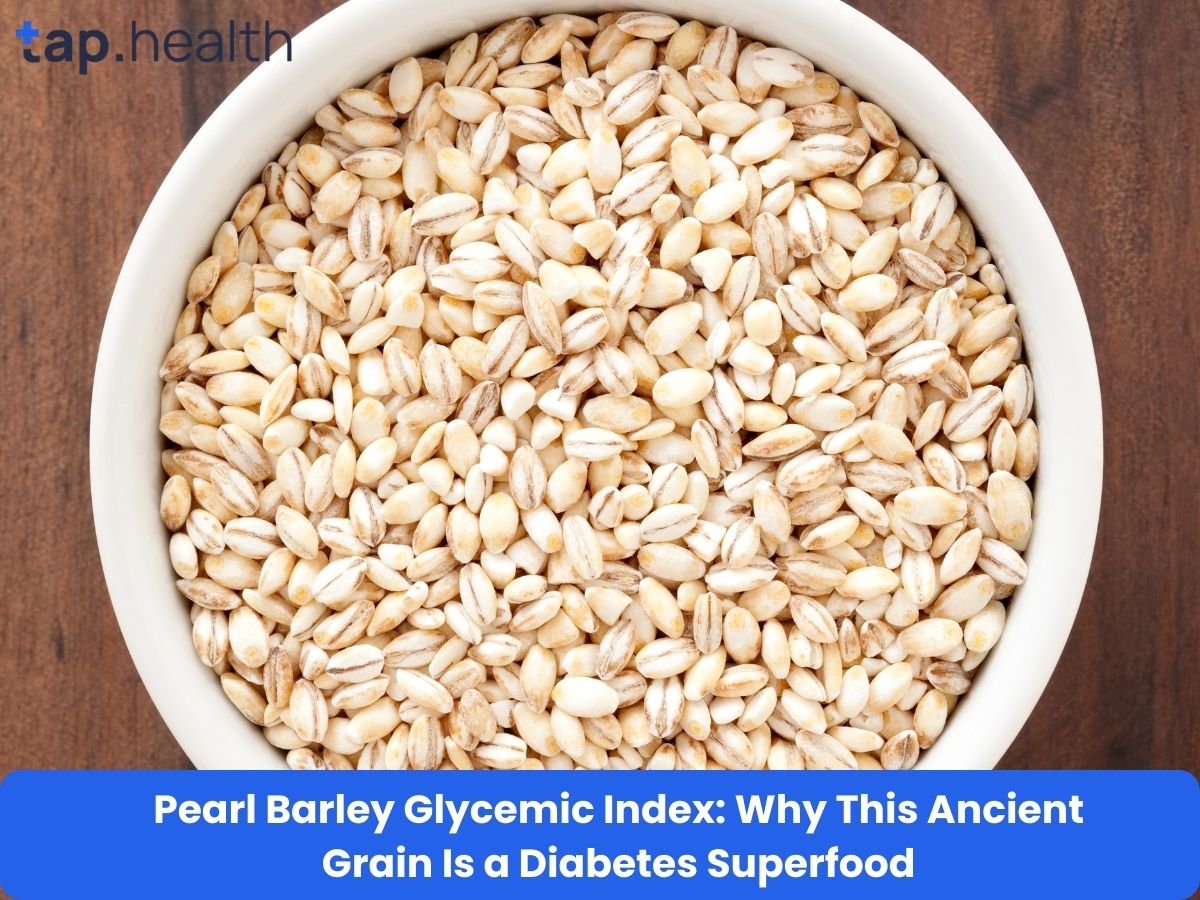Table of Contents
- Regenerative Medicine: A Promising Diabetes Cure?
- Can Regenerative Therapies Reverse Diabetes Damage?
- Exploring Regenerative Medicine for Diabetes Treatment
- Regenerative Medicine vs. Traditional Diabetes Treatments: A Comparison
- Regenerative Approaches: The Future of Diabetes Management?
- Frequently Asked Questions
- References
Are you living with diabetes and feeling frustrated by the limitations of current treatments? For years, managing this chronic condition has meant careful monitoring and often, a constant battle against complications. But what if there was a more fundamental approach? This blog explores the exciting potential of regenerative medicine: a field offering a completely new perspective on diabetes treatment. Could it be the answer we’ve been waiting for? Let’s delve into the research and discover whether Regenerative Medicine: A New Hope for Diabetes Treatment? is a question with a promising answer.
Regenerative Medicine: A Promising Diabetes Cure?
Hope on the Horizon for Diabetes in India and Tropical Countries
Diabetes, especially type 2, is a massive health challenge in India and many tropical nations. But there’s a glimmer of hope: regenerative medicine. While lifestyle changes – diet and exercise – can dramatically impact the disease (up to 80% of type 2 cases could be prevented or delayed, source), regenerative approaches offer a truly revolutionary possibility. Imagine repairing the very cells that are failing! These therapies could potentially reverse diabetes’s effects, dramatically improving millions of lives.
For more on lifestyle changes, check out our article: Can a Plant-Based Diet Reverse Diabetes?
Targeting the Root Cause
Traditional treatments manage symptoms; regenerative medicine aims for the root. Think of it like this: instead of just patching a leaky roof, you’re rebuilding the entire house. This could involve boosting the body’s natural insulin production or even regrowing damaged pancreatic beta cells – the insulin factories of the body. Scientists are exploring several avenues, including stem cell therapy and growth factors. Early trials are showing exciting results, especially encouraging for regions like India with high diabetes prevalence.
A Brighter Future?
The potential of regenerative medicine to transform diabetes care in India and similar regions is huge. It’s not a magic bullet – more research is absolutely needed. But the progress is inspiring. Keep an eye on clinical trials and new breakthroughs. Talk to your doctor about these emerging treatments; combining them with a healthy lifestyle (source) might be the key to unlocking their full potential.
Want to dive deeper into reversing diabetes? We have a comprehensive guide: How to Reverse Diabetes Permanently.
Can Regenerative Therapies Reverse Diabetes Damage?
The $327 billion annual cost of diabetes in the US – a staggering figure encompassing direct medical expenses and lost productivity ($327 billion annually) – underscores the desperate need for breakthroughs. This isn’t just an American problem; diabetes is surging globally, especially in resource-scarce regions of India and other tropical countries. Could regenerative medicine be the answer, offering a genuine chance to undo the damage?
Exploring Regenerative Approaches
Regenerative therapies, like stem cell transplants and tissue engineering, are incredibly promising. The goal? To either repair or replace the insulin-producing beta cells in the pancreas, or to significantly improve how the body uses insulin. Early trials have shown real cause for optimism, particularly in boosting insulin sensitivity and easing complications such as diabetic neuropathy and nephropathy. But more research is crucial, especially in diverse populations. We need to understand how these therapies work across different genetic backgrounds and environmental conditions, particularly in places like India. This is especially relevant given questions around reversing Type 3 diabetes (see: Can Type 3 Diabetes Be Reversed?).
Challenges and Opportunities
The elephant in the room? Cost. These therapies are expensive, presenting a huge barrier, especially in areas with limited healthcare access. However, technological advancements could make them more affordable in the long run, potentially offsetting the ongoing costs of managing diabetes complications. International collaborations are key – we need partnerships between global institutions and local healthcare providers to ensure these therapies are culturally appropriate and accessible. The role of AI in making this happen is also exciting (see: How AI Can Help You Reverse Diabetes).
A Path Forward
Regenerative medicine isn’t a diabetes cure yet, but the research is incredibly hopeful. Increased investment, combined with a focus on accessibility, especially in places like India, is absolutely vital. This isn’t just about numbers; it’s about improving the lives of millions. Support clinical trials and advocate for affordable access – let’s make this a reality.
Exploring Regenerative Medicine for Diabetes Treatment
The sheer scale of undiagnosed diabetes – a shocking 50% globally, according to the International Diabetes Federation (diabetesatlas.org) – is a wake-up call. This is especially true in places like India and other tropical regions, where the burden of this chronic disease is particularly high. It’s a stark reminder that we desperately need fresh approaches to diabetes management. Enter regenerative medicine, offering a glimmer of hope for a true revolution in how we tackle this illness.
Promising Avenues in Regenerative Medicine for Diabetes
Several exciting avenues are being explored. Imagine this: stem cell therapy could replace the insulin-producing beta cells lost in type 1 diabetes, effectively restarting the body’s natural sugar regulation. Then there’s tissue engineering, where scientists are working on creating lab-grown pancreatic islets – the tiny clusters of cells responsible for insulin production – offering a potential replacement for damaged ones. And finally, growth factor therapies aim to coax existing cells into regenerating, boosting their function.
Clinical trials are already underway, testing these methods – particularly vital in areas with limited access to traditional treatments. It’s incredibly encouraging to see this progress, especially for those living with type 1 diabetes, where the immune system attacks these crucial beta cells. Supporting a strong immune system is also key, as discussed in our article on Boosting Immunity While Managing Diabetes.
Regional Considerations and Future Outlook
Bringing regenerative medicine to India and other tropical countries presents both unique opportunities and challenges. The high prevalence rates and specific demographic factors mean tailored solutions are crucial. The next step? Focusing research on cost-effective and accessible solutions. We need to translate these exciting lab discoveries into real-world benefits for those who need it most. The potential to ease the diabetes burden, particularly in underserved communities, is enormous.
Increased funding for research and development, alongside improved healthcare infrastructure, will be key to unlocking this potential. Early detection and proactive management, combined with further advancements in regenerative medicine, and careful consideration of safe and effective dietary supplements (Safe and Effective Dietary Supplements for Diabetes Care), offers a brighter, healthier future for millions.
Regenerative Medicine vs. Traditional Diabetes Treatments: A Comparison
Traditional Approaches: Limitations in Tropical Climates
Managing diabetes in India and other tropical countries presents unique hurdles. While insulin and metformin, alongside lifestyle changes, form the cornerstone of treatment, access to consistent healthcare, especially in rural areas, remains a significant barrier. The sheer number of working-age adults with diabetes – a staggering 61% of those affected are between 20 and 64, according to the IDF Diabetes Atlas (IDF Diabetes Atlas) – places an immense strain on healthcare systems and national productivity.
The tropical climate adds another layer of complexity; fluctuating temperatures can affect medication stability, and the increased risk of infections poses further challenges. Dietary considerations are equally crucial. The effectiveness of, say, low-carb versus moderate-carb diets needs careful evaluation within these specific contexts. A more detailed comparison can be found here: Comparing Low-Carb vs. Moderate-Carb Diets in Diabetes Care.
Regenerative Medicine: A Promising Frontier
Enter regenerative medicine, offering a beacon of hope. Techniques like stem cell therapy and islet cell transplantation aim to address the root cause: damaged insulin-producing cells. Imagine a future where diabetes isn’t just managed, but potentially cured. Early research is incredibly promising, but we need more studies, particularly focusing on diverse populations in regions like India.
The potential benefits for the substantial older adult population – 39% of people with diabetes are 65 or older (IDF Diabetes Atlas) – are particularly compelling. Could this lead to reversing type 2 diabetes? Is Type 2 Diabetes Reversible? That’s a question driving intense research and lively debate.
Conclusion: Hope for the Future
Regenerative medicine, though still in its early stages, holds tremendous potential for transforming diabetes care in tropical regions. Increased investment in accessible and affordable therapies is key. Stay informed about clinical trials and support initiatives in your area – your engagement can help bring this life-changing technology to those who need it most.
Regenerative Approaches: The Future of Diabetes Management?
The global diabetes crisis is alarming. The number of people (aged 20-79) living with diabetes is projected to skyrocket from 536.6 million in 2021 to a staggering 783.7 million by 2045 (this projection). This dramatic increase, especially in regions like India and other tropical countries, urgently demands innovative solutions. Could regenerative medicine be the answer?
Harnessing the Body’s Innate Healing Power
Regenerative medicine—the science of repairing or replacing damaged cells and tissues—offers a revolutionary approach to diabetes. Instead of just managing symptoms like traditional methods, it tackles the disease’s root causes. Imagine this: stem cell therapies could potentially restore the insulin-producing beta cells in the pancreas, a game-changer for type 1 diabetes. Similarly, regenerative techniques could boost insulin sensitivity in type 2 diabetes, addressing a major challenge, particularly as we age (this article on the complexities of managing diabetes later in life).
The Global Reach (and Challenges) of Regenerative Medicine
The surging diabetes rates in India and other tropical nations highlight a critical need for accessible, tailored treatments. This means more than just developing advanced therapies; it requires integrating them with existing healthcare systems and, importantly, considering traditional medicine’s role. We also need to deeply understand the unique genetic and environmental factors driving diabetes in these regions. New technologies, as discussed in this piece, will play a vital role in making these breakthroughs accessible.
A Collaborative Imperative
The future of diabetes care hinges on dedicated research and investment in regenerative medicine. For countries like India and those in the tropics, successful implementation demands collaboration: researchers, healthcare providers, and policymakers must work together. Only through such partnerships can we translate the incredible promise of regenerative approaches into life-changing therapies for the millions affected by this devastating disease.
Frequently Asked Questions on Regenerative Medicine
Q1. What is regenerative medicine and how could it revolutionize diabetes treatment?
Regenerative medicine offers a potential breakthrough for diabetes by focusing on repairing or replacing damaged insulin-producing cells in the pancreas, rather than just managing symptoms. This could involve stem cell therapy, tissue engineering, or growth factor therapies, potentially reversing diabetes’s effects.
Q2. What are the potential benefits and limitations of regenerative therapies for diabetes?
Potential benefits include reversing or significantly reducing the effects of diabetes, improving insulin production or sensitivity, and alleviating complications like neuropathy and nephropathy. Limitations include high costs and the need for further research, especially regarding diverse populations and long-term effects.
Q3. How can regenerative medicine address the diabetes crisis in India and other tropical countries?
The high prevalence of diabetes in these regions makes regenerative medicine particularly important. However, successful implementation requires focusing on affordability and accessibility, tailored solutions, and strong collaborations between global institutions and local healthcare providers.
Q4. How does regenerative medicine compare to traditional diabetes treatments?
Traditional treatments primarily manage symptoms with medication and lifestyle changes, while regenerative medicine addresses the root cause. Regenerative approaches offer the potential for a cure or significant reversal of diabetes’s effects, but they are currently more expensive and less widely available than traditional methods.
Q5. What is the current state of research and what’s needed to make regenerative therapies a reality for more people?
Early trials show promising results, but more research is necessary to confirm efficacy, address cost concerns, and ensure equitable access. Increased investment, international collaborations, and a focus on accessibility are crucial to translating these potential breakthroughs into widely available treatments.
References
- A Practical Guide to Integrated Type 2 Diabetes Care: https://www.hse.ie/eng/services/list/2/primarycare/east-coast-diabetes-service/management-of-type-2-diabetes/diabetes-and-pregnancy/icgp-guide-to-integrated-type-2.pdf
- What is Diabetes: https://www.medschool.lsuhsc.edu/genetics/docs/DIABETES.pdf



